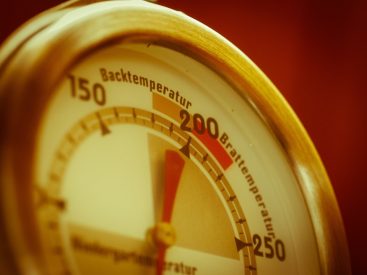
Cooking food to the correct temperature is crucial for ensuring it is safe to eat and the best possible quality. A food thermometer is an essential tool for any cook, whether you are grilling, roasting, or baking. With so many options available on the market, choosing the best food thermometer for your cooking needs can be overwhelming. In this article, we will discuss the different types of food thermometers and provide tips on how to choose the best one for your specific cooking needs.
Types of Food Thermometers
There are several types of food thermometers available, each with its own features and benefits. The most common types of food thermometers include:
- Instant-read Thermometers: These thermometers provide a quick and accurate temperature reading and are suitable for a wide range of foods.
- Digital Probe Thermometers: These thermometers have a metal probe that is inserted into the food to measure the temperature. They are ideal for checking the internal temperature of thick cuts of meat.
- Oven-safe Thermometers: These thermometers can be left in the food while it cooks and are suitable for roasts and other large cuts of meat.
- Infrared Thermometers: These thermometers measure the surface temperature of the food and are great for grilling and frying.
Factors to Consider
When choosing a food thermometer, there are several factors to consider to ensure you select the best one for your cooking needs:
- Accuracy: Look for a thermometer that provides accurate and consistent readings.
- Response Time: Choose a thermometer with a fast response time, especially if you are cooking thick cuts of meat.
- Range: Consider the temperature range of the thermometer and whether it meets your specific cooking needs.
- Display: Opt for a thermometer with an easy-to-read and large display for convenience.
- Durability: Select a thermometer that is durable and can withstand frequent use and high temperatures.
- Additional Features: Some thermometers come with additional features such as timers, alarms, and customizable settings. Consider whether these features are important to you.
Conclusion
Choosing the best food thermometer for your cooking needs is essential for ensuring the safety and quality of your food. Consider the type of thermometer that is most suitable for the foods you cook most often, as well as the specific features that will make your cooking experience easier and more enjoyable. By keeping these factors in mind, you can find the perfect food thermometer to take your cooking to the next level.
FAQs
Q: Why do I need a food thermometer?
A: Using a food thermometer is the only way to ensure that your food has reached a safe internal temperature, reducing the risk of foodborne illness. It also helps you achieve the desired level of doneness for different types of food.
Q: Can I use the same thermometer for different types of food?
A: It is recommended to use separate thermometers for different types of food, especially when cooking raw meat, to prevent cross-contamination.
Q: How do I clean and maintain my food thermometer?
A: Follow the manufacturer’s instructions for cleaning and maintenance. Most digital probe thermometers can be wiped with a damp cloth and then sanitized with a mild solution of water and bleach.
Q: Can I calibrate my food thermometer?
A: Some food thermometers can be calibrated to ensure accuracy. Refer to the user manual for instructions on how to calibrate your specific thermometer.


